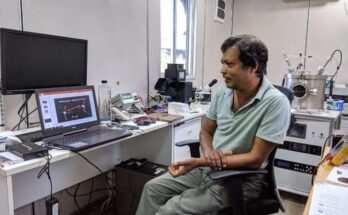In a recent paper published in Nature Nanotechnology a group of scientists from the University of Manchester described a novel way to filter seawater and turn it to drinkable water using a nano filter. This new technology involves a nano membrane developed using Graphene oxide, and this membrane said to be capable of sieving common salts from the sea water.
Previous research had shown the graphene-oxide membranes exciting potential in gas separation and water filtration. But this is the first time a research demonstrate the capability of the Graphane-Oxide membrane in sieving common salts used in desalination technologies, which require even smaller sieves.
The Manchester-based group in this research has now further developed these graphene membranes and found a strategy to avoid the swelling of the membrane when exposed to water. The pore size in the membrane can be precisely controlled which can sieve common salts out of salty water and make it safe to drink.
Professor Rahul Nair, at The University of Manchester said: “Realisation of scalable membranes with uniform pore size down to atomic scale is a significant step forward and will open new possibilities for improving the efficiency of desalination technology.
“This is the first clear-cut experiment in this regime. We also demonstrate that there are realistic possibilities to scale up the described approach and mass produce graphene-based membranes with required sieve sizes.”
Mr. Jijo Abraham and Dr. Vasu Siddeswara Kalangi were the joint-lead authors on the research paper: “The developed membranes are not only useful for desalination, but the atomic scale tunability of the pore size also opens new opportunity to fabricate membranes with on-demand filtration capable of filtering out ions according to their sizes.” said Mr. Abraham.
Scientists believe this discovery would lead to much easier method of water purification specially for the countries which do not have the financial infrastructure to fund large plants without compromising the yield of fresh water produced.
More information: Tunable sieving of ions using graphene oxide membranes, Nature Nanotechnology, nature.com/articles/doi:10.1038/nnano.2017.21



